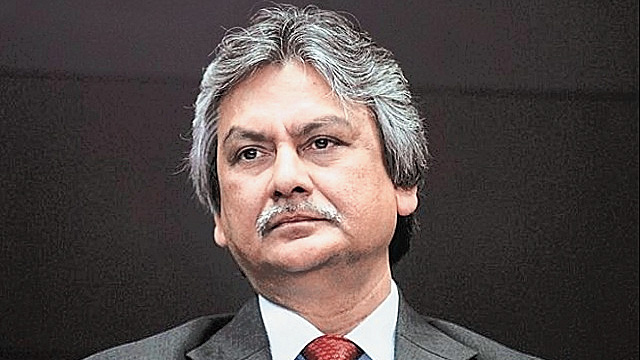A social welfare principle underpins the conduct of monetary policy in the country: financial inclusion.
Financial inclusion was the lofty goal that the UPA government under Manmohan Singh had first articulated before that somewhat nebulous concept was gummed up by then chief economic advisor Arvind Subramanian into a quantifiable and measurable level of achievement using Jan Dhan, Aadhar and Mobile (JAM).
But now — and perhaps for the first time — the Reserve Bank of India has tried to explain how the noble social welfare goal of financial inclusion has influenced the conduct of monetary policy .
On Friday, RBI deputy governor Michael Patra said the government’s compulsion to push the financial inclusion agenda in the country has influenced monetary policy choices and options even as he also justified the choice of CPI inflation in the inflation targeting framework of the central bank.
The RBI, which has also over the past few years taken various steps to widen the spread of financial inclusion, released a national financial inclusion index (FI-Index) in September 2021 to assess achievement in easily quantifiable terms.
The index is based on 97 indicators representing “access” or the supply of financial inclusion infrastructure, “usage” or demand for financial services and "quality", or inequality in access and usage due to lack of financial literacy and protection.
The index takes values from 0 to 100 and implicitly sets a goal for the RBI: 100 per cent financial inclusion for India.
“By 2021, we have passed the halfway mark, doing best in access or the supply of the financial infrastructure, and lagging the most in usage or demand to be financially included,” Patra said in a keynote address at a seminar organised by the Indian Institute of Management, Ahmedabad.
The FI index rose from 49.9 in March 2019 to 53.1 in March 2020 and further to 53.9 in March 2021, thus crossing the half-way mark.
The RBI deputy governor said though the needle on financial inclusion has moved even during the pandemic, there is still a long way to go. He however, pointed out that India’s monetary policy is by design financially inclusive and it will reap the benefits of this strategy in the future in terms of effectiveness and welfare maximisation.
According to the RBI deputy governor, the relationship between financial inclusion and monetary policy is “unfashionable’’ but interest is growing in the effects of financial inclusion on conduct of monetary policy and its contribution to human welfare through this channel.
While monetary policy looks to minimise the deviations of output from its potential and inflation from the target, there is a two-way relationship between monetary policy and financial inclusion.
He said low financial inclusion in the rural areas has led to a situation where food price increase is translating into income which isn’t being saved because of limited access to banking channels.
As people start to spend the money as soon as they receive it, there is a rise in aggregate demand which feeds the inflation spiral in the country.
“Inflation volatility affects all consumers, whether included or excluded. Therefore, minimising inflation volatility should be the predominant objective of monetary policy in its welfare maximising role,” he added.
However, financial inclusion can dampen inflation and output volatility by smoothing consumption, as people are able to draw down financial savings in difficult times for everyday needs. Significantly, in this process, it makes the people interest-sensitive.
“Inflation targeting monetary policy ensures that even those at the fringe of financial inclusion are secured from adverse income shocks that hit them when prices rise unconscionably,’’ the RBI deputy-governor said.
Justifying the choice of the CPI index, he said that in India, food accounts for 46 per cent of the retail inflation, among the highest shares anywhere in the world. Further, CPI combines a rural index and an urban index, with the share of food being even higher in the rural index at 54.2 per cent. In the urban index, the share of food at 36.3 per cent is also sizable in a cross-country perspective.
Given such conditions, aggregate demand is highly influenced by the behaviour of food prices and farm output, rather than interest rate changes to which the urban index could be sensitive.
“It is in this context that the monetary policy framework overhaul in 2016 to usher in a flexible inflation targeting regime wisely chose the headline CPI as its metric for measuring the inflation target rather than any measure of core inflation, despite persuasive arguments for the latter that are made even today,” he added
Patra further said that as financial inclusion rises even further in India, consumption volatility as a source of output volatility can be expected to wane, providing headroom for monetary policy to remain focused on minimising inflation volatility.
On the impact of financial inclusion on monetary policy transmission, he said that it enhances the potency of interest-rate based monetary policy by causing an increasing number of people to become responsive to interest rate cycles, which in turn, prompts "appropriate smoothing behaviour". There is also some evidence to suggest that as interest rate sensitivity of the population increases, central banks need to move interest rates by less to achieve their objectives.










